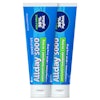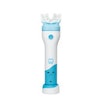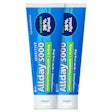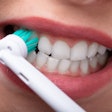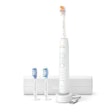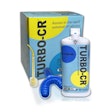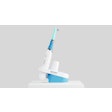Editor's note: Quotes are taken from an exclusive interview during the recent International Dental Show (IDS) in Cologne, Germany.
Dental caries remains one of the most widespread health issues globally, despite the advancements in dentistry. In a recent interview at IDS with dentists Drs. Haley and Goly Abivardi, co-founders of vVardis, I asked, "Why, in this day and age, are we still battling caries so much?"
The response highlighted a long-standing issue in dental care: The subclinical signs of decay often go untreated due to the lack of minimally invasive solutions.
The problem: Watching, waiting, and losing patients
One of the biggest challenges in dentistry is how early decay is handled. Traditionally, dentists identify areas of demineralization -- what many call "watch areas" -- and instruct patients to monitor these teeth over time. As Dr. Haley pointed out, "Eighty percent of the patients sitting on the dental chair have this early decay, and the majority of them are sent home with 'watch' as the diagnosis." Unfortunately, she added, this approach often results in patients not returning until the decay has progressed significantly, requiring more invasive treatments like fillings, root canals, or even extractions.
 Drs. Haley and Goly Abivardi, co-founders of vVardis.
Drs. Haley and Goly Abivardi, co-founders of vVardis.
Dr. Goly pointed out that, in medicine, when a patient presents with high blood pressure, they aren’t sent home with a recommendation to "watch" it until a heart attack occurs. Yet, in dentistry, this has been the norm, until now.
A game changer for early caries treatment
A revolutionary new product is set to change how early caries is treated. Curodont Repair is reportedly the first biomimetic system for treating early carious lesions. It targets non-cavitated lesions, meaning decay that hasn't yet broken through the enamel. It allows for a noninvasive, drill-free, and pain-free application that can be performed by both dentists and hygienists (depending on state laws).
"We have now a product which can exactly treat these subclinical, non-cavitated lesions noninvasively, [it's] very easy to apply, and it can be applied by dentists and hygienists alike," Goly explained, meaning that patients no longer must wait for their decay to worsen before receiving treatment.
Efficiency and workflow integration
According to the doctors, one of the most exciting aspects of this breakthrough is its seamless integration into existing dental workflows. Traditionally, treating multiple small caries lesions can take up to two hours of chair time. However, this new treatment allows clinicians to address three lesions in five minutes.
"Your dental hygienist can do it, and in two hours, you can save chair time to do bigger treatments," Goly said. This increased efficiency allows dental practices to treat more patients, reduce chair time, and improve patient satisfaction.
A win-win for patients and providers
According to Goly, patients have been overwhelmingly receptive to this new approach.
"Up to 60% of patients opt for the treatment when it's offered as an out-of-pocket expense," she said, adding that for those with insurance coverage, acceptance rates are even higher.
The doctors also believe this development enhances patient trust and retention. When patients understand that their dentist is addressing decay early and noninvasively, they are more likely to return for regular visits.
"We increase patient satisfaction and trust. The retention rate goes up because they want to come back and check their teeth every six months," Haley said.
The future of fear-free dentistry
The shift toward alleviating patients' fear is another driving force behind this innovation. Many patients, especially children, avoid dental visits due to fear of pain and needles. Curodont aligns with the fear-free movement, eliminating many of the common anxieties associated with traditional fillings.
"We opened our first fear-free dental office in Zurich over 20 years ago," Goly said. "The concept was very successful because it didn't look like a dental office. It was open daily from 7 a.m. to 9 p.m., making dental care more accessible."
Bringing awareness to the public
While the dental community has embraced this solution, broader patient awareness remains a priority. A major marketing push is underway with Curodont Repair, with campaigns planned in The New York Times and USA Today to educate the public about early decay treatment.
"Awareness is very important," Haley said. "Patients need to know that early decay treatment exists. This is the best motivation for them to come every six months because if their caries activity is high, they could develop new early decay areas."
Conclusion
According to the Golys, this new treatment represents a paradigm shift in dentistry. Rather than waiting for caries to become severe, dentists now have the tools to treat early decay effectively, efficiently, and noninvasively. This breakthrough can not only enhance patient care but also improve practice efficiency and financial growth.
For dentists and hygienists, the doctors and co-founders believe this truly marks the beginning of a new era in caries management -- one that prioritizes prevention, patient comfort, and efficiency. As the dental field continues to evolve, embracing these innovations could be key to providing top-tier care and ensuring a healthier future for patients worldwide.


